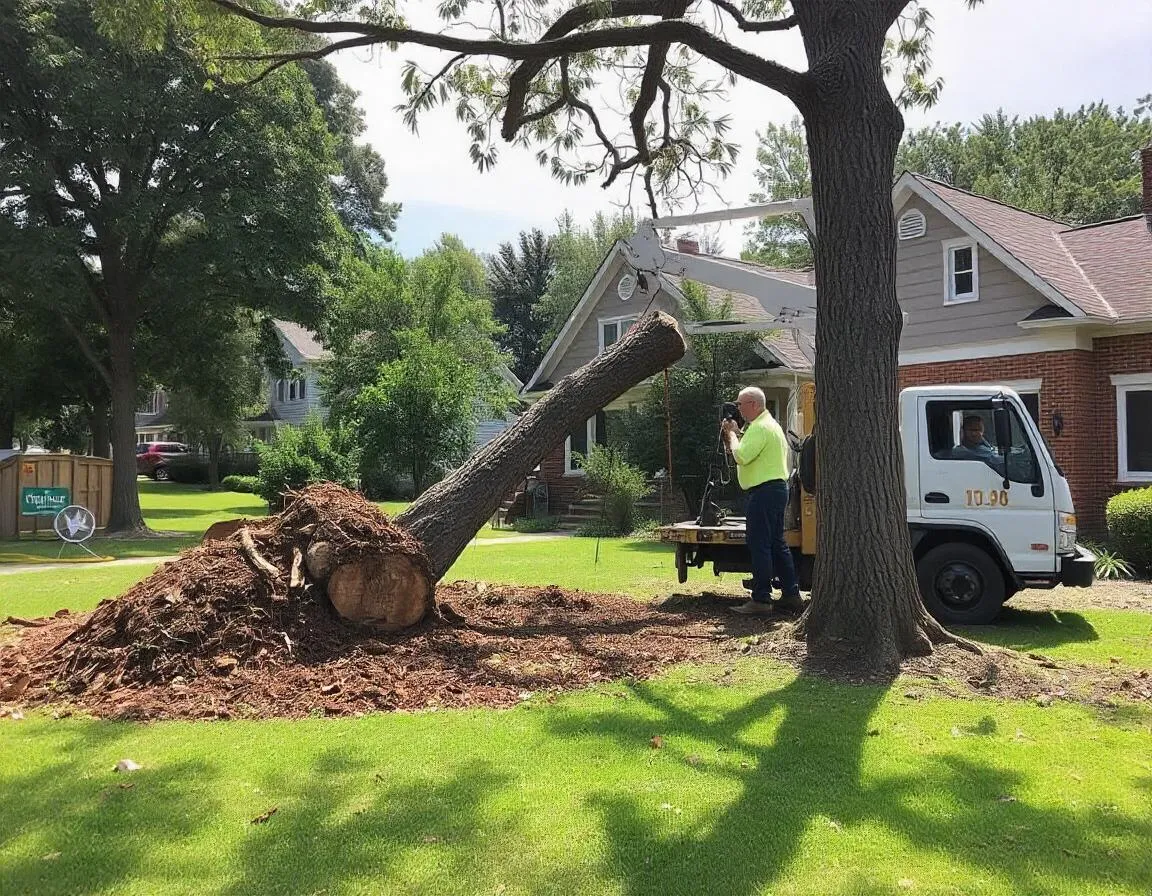Featured
Table of Contents
- – Best Time To Hire An Stump Grinding In Englewo...
- – Deals On Stump Removal In Englewood Cliffs, NJ
- – How Much To Budget For A Tree Trimming In Eng...
- – Englewood Cliffs, NJ Tree Cutting: Common Pri...
- – Englewood Cliffs, NJ Stump Grinding Review: P...
- – Most Popular Arborist In Englewood Cliffs, NJ...
- – Reliable Tree Service At Fair Prices In Engle...
- – What Does It Cost To Get An Tree Clearing In...
- – Final Tree Service Costs In Englewood Cliffs...
- – Transparent Tree Cutting Costs In Englewood ...
- – Complete Guide To Tree Trimming Prices In En...
- – Englewood Cliffs, NJ Tree Trimming Cost Guid...
- – Military Discounts On Arborist In Englewood ...
- – Englewood Cliffs, NJ Tree Cutting Estimates:...
- – Cost Comparison: Stump Grinding In Englewood...

The subsections below supply more in-depth details about pricing, including a typical variety for each. TypeAverage Elimination CostPineConiferPalmMagnoliaArborvitaeAshCedarSweet GumEucalyptusSycamoreCypressOakMaplePoplar You can anticipate to pay in between to remove a pine, depending upon its size. Eliminating a pine is one of the more affordable jobs unless it is one that has actually been around for many years and is quite big.
Best Time To Hire An Stump Grinding In Englewood Cliffs, NJ
Pines also have a tap root that grows deep into the soil, which can show to be more difficult to remove. The process itself involves a specialist cutting the tree, clearing the base, cutting the surface roots, removing the stump, and lastly treating the soil. Without a professional hand, you risk leaving pine seedlings behind, which will fall from the roots of distressed pines.
Deals On Stump Removal In Englewood Cliffs, NJ
The U.S. nationwide average for conifer elimination is approximately to have the conifer reduced, transported away, and the stump ground or gotten rid of totally. Conifers are generally much easier to eliminate, and despite the fact that they can grow rather tall, they do not cost a fortune to eliminate. Conifers include pine, spruce, fir, and juniper trees.
How Much To Budget For A Tree Trimming In Englewood Cliffs, NJ
While conifers are beautiful, they eliminate native plants and certain kinds of yard. This is since they need a lot of water and nutrients to survive, so they leach it off surrounding plants. They also have an extensive network of roots, which can affect your home's foundation. The average price of palm elimination depends upon the height as much as the type, ranging from.
Englewood Cliffs, NJ Tree Cutting: Common Pricing Mistakes
That is why it is very important to understand which type you are removing. While you do not need an herbicide to kill a palm tree, there are some steps your removal specialist will have to require to guarantee the job is done correctly. There are two ways they can get rid of them: by slicing them down or digging them up.
Englewood Cliffs, NJ Stump Grinding Review: Pricing
From there, they remove the real tree and then the stump. Anticipate to pay between to eliminate this type of tree, depending on the precise size and details of the job.
Most Popular Arborist In Englewood Cliffs, NJ: Pricing
There are 3 types: green, white, and black ash. With its gray-tinged bark, its leaves are green or purple in the spring and golden yellow or purplish-red in the fall.
Reliable Tree Service At Fair Prices In Englewood Cliffs, NJ

The bark is softer, and it flowers later in the year - stump grinding. Due to the variation in height, the removal price difference is wide from. A coniferous, evergreen tree, the cedar is a hardy species. True cedars delight in greater elevations, mainly in the Mountain ranges and the Mediterranean. A real cedar can grow as high as 160 feet in height and is typically planted in the United States as a landscape choice.
What Does It Cost To Get An Tree Clearing In Englewood Cliffs, NJ
The growth of incorrect cedars varies from 50 feet up to 230 feet high. Homeowners might pay anywhere from, depending upon the roots. With star-shaped leaves and spectacular fall colors, the sweet gum is thought about a medium to large tree. Enjoying complete sun, the sweet gum can not tolerate contamination.
Final Tree Service Costs In Englewood Cliffs, NJ: No Hidden Fees
It has a big root base of 40 to 50 feet, which impacts the elimination cost. Normally, it costs in between to eliminate a eucalyptus. Eucalyptus are not typical all over, however they are quite big compared to others, which is why even the smaller sized ones are so pricey to eliminate. Originally from Australia, eucalyptus are intrusive plants that grow in thick groves that take out native plants.
Transparent Tree Cutting Costs In Englewood Cliffs, NJ
There are a handful of ways to do this, including burning, pulling, grinding, or killing them with herbicide. Expect to pay in between to get rid of sycamores, based on the height, trunk size, and quantity of work involved. Sycamores are one of the biggest wood trees, normally varying from 60 to 100 feet high and as large as 15 feet.
Complete Guide To Tree Trimming Prices In Englewood Cliffs, NJ
The first 2 steps will expose the within the tree and cut off the flow of nutrients up the trunk. From there, a professional applies herbicide to eliminate the tree and reduce the trunk. Then, they will kill the stump. Otherwise, brand-new sprouts may grow from it. Lowering and removing a mature cypress could cost as much as.
Englewood Cliffs, NJ Tree Trimming Cost Guide 2025
There are many different kinds of Cypress trees, however the most widespread are the Leyland, Arizona, Bald, and Italian. The Bald Cypress grows in swampy or extremely moist locations while the others take pleasure in a dry, warm, or hot climate (stump removal). They can grow as high as 80 to 100 feet high
Military Discounts On Arborist In Englewood Cliffs, NJ

Prone to illness, the Cypress is among the most valued woods for furniture. The typical oak grows to around 60 feet, and depending upon the complexity of the removal, it costs approximately to get rid of. The specific size of your oak and the effort required to fell it affect what you will really spend for removal along with any additional services like stump grinding.
Englewood Cliffs, NJ Tree Cutting Estimates: What To Expect
Access to the trees and the roots will likewise impact the total expense. Maples can quickly grow up to 100 feet or more and usually cost between to remove from your residential or commercial property. The last price depends upon the real height and complexity of the job. Maples are normally among the more pricey trees to eliminate due to the fact that of their size and the work involved in the removal.
Cost Comparison: Stump Grinding In Englewood Cliffs, NJ
Growing as high as 90 to 115 feet, these massive woods are primarily discovered in North America and include the aspen, cottonwood, and balsam trees. The process to get rid of trees includes all the cutting and cutting of the branches and trunk, bringing it down to a stump.
Table of Contents
- – Best Time To Hire An Stump Grinding In Englewo...
- – Deals On Stump Removal In Englewood Cliffs, NJ
- – How Much To Budget For A Tree Trimming In Eng...
- – Englewood Cliffs, NJ Tree Cutting: Common Pri...
- – Englewood Cliffs, NJ Stump Grinding Review: P...
- – Most Popular Arborist In Englewood Cliffs, NJ...
- – Reliable Tree Service At Fair Prices In Engle...
- – What Does It Cost To Get An Tree Clearing In...
- – Final Tree Service Costs In Englewood Cliffs...
- – Transparent Tree Cutting Costs In Englewood ...
- – Complete Guide To Tree Trimming Prices In En...
- – Englewood Cliffs, NJ Tree Trimming Cost Guid...
- – Military Discounts On Arborist In Englewood ...
- – Englewood Cliffs, NJ Tree Cutting Estimates:...
- – Cost Comparison: Stump Grinding In Englewood...
Latest Posts
What You Need To Know About Stump Grinding Costs In Lawrence, IN
Finding Budget Stump Grinding In Macon, GA
Top Arborist FAQs In Orangevale, CA Answered
More
Latest Posts
What You Need To Know About Stump Grinding Costs In Lawrence, IN
Finding Budget Stump Grinding In Macon, GA
Top Arborist FAQs In Orangevale, CA Answered